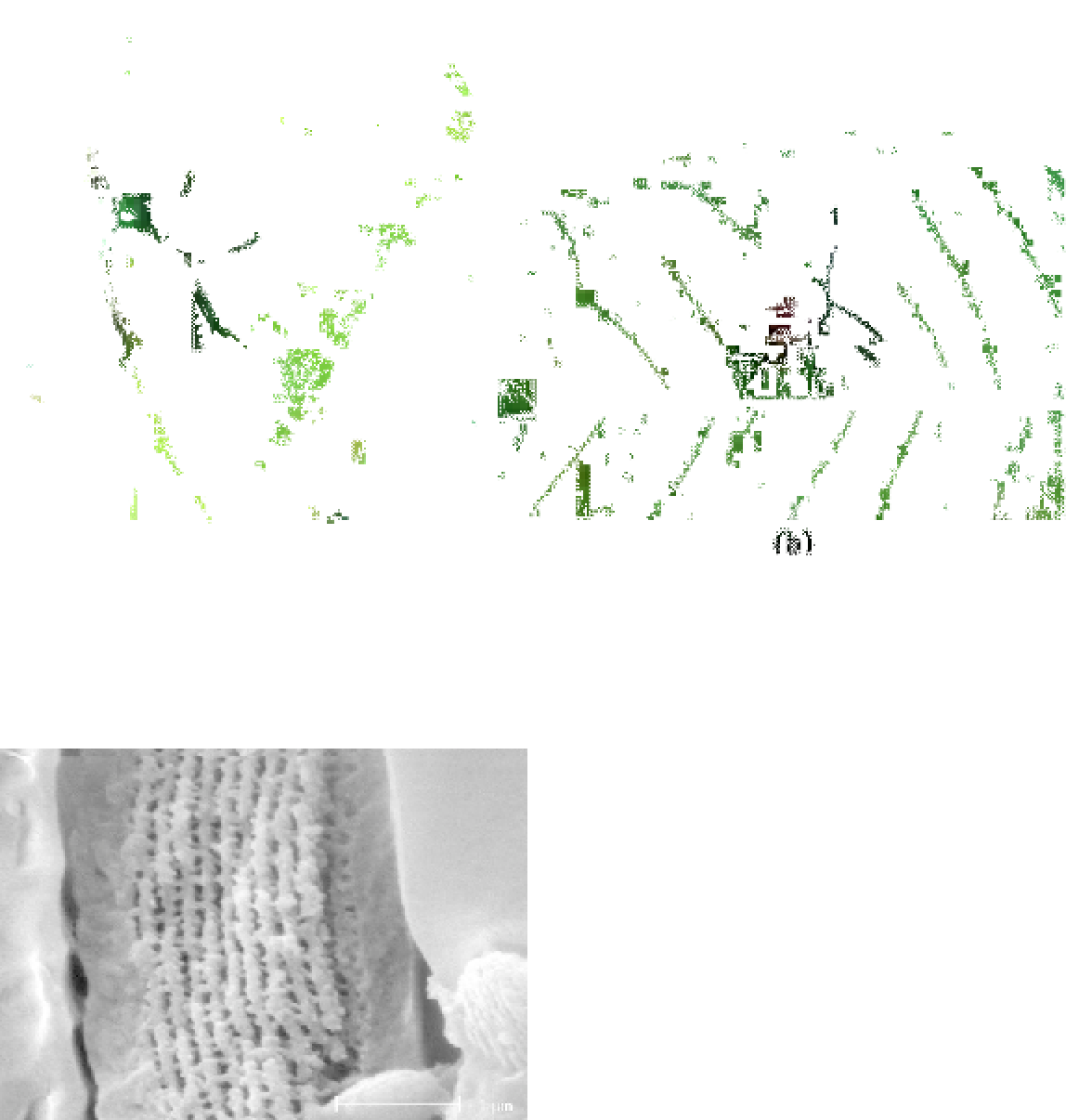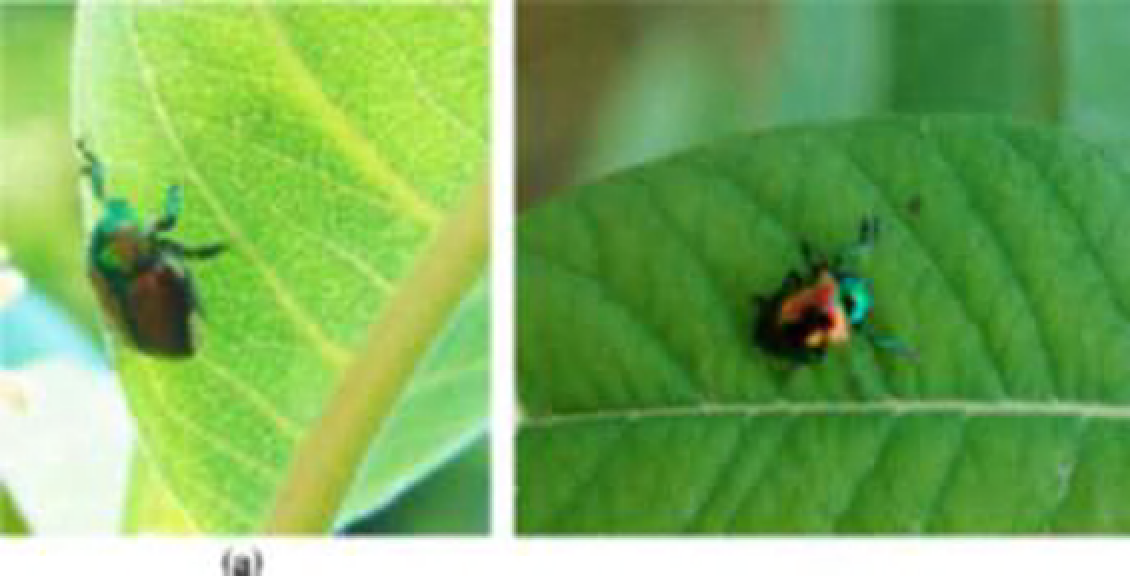Biomedical Engineering Reference
In-Depth Information
FIGURE 11.10
Structural colors due to periodic multilayered structures in the exocuticle of beetles. (a) Japanese beetle
Popillia japonica.
Courtesy of Christopher R. Hardy (Millersville University, USA). (b) Dogbane beetle
Chrysochus auratus.
Courtesy of Gregory Hoover (Pennsylvania State University, USA). (For interpretation of the references to color in this figure
legend, the reader is referred to the web version of this topic.)
tiny cuticle rods that allow the formation of
100 nm air pockets. Both the alteration of the
spacing and thickness of the cuticle layers and
the incorporation of different pigments within
the scale create various colors
[50]
.
Interference is also the predominant cause of
iridescent colors in birds (see
Figures 11.2 and
11.3
) and some tropical fish. Most often, bird col-
oration originates from biochromes--pigments
embedded within the feathers. However, no blue
biochromes have been extracted from blue feath-
ers; instead, the blue color is entirely of structural
origin.
The structures creating iridescent colors in
birds are diverse, but all are based on ordered
arrays of melanin granules within a keratin
matrix in feather barbules. For example, the
feathers of grackles and other birds in the family
Icteridae
range in appearance from matte black
to iridescent. Melanin is densely packed in the
barbules of matte-black species, but melanin
FIGURE 11.11
SEM of a scale of a longhorn beetle
Tme-
sisternus isabellae
[62]
. Courtesy of Jian Zi (Fudan Univer-
sity, China). Reproduced with permission from the Optical
Society of America.
Madagascar. Each scale of their wings com-
prises four or five layers of cuticle, approxi-
mately 40 nm thick, which are held apart by


